This is day two in my 30 day blogging challenge. My goal this month is to post one recipe every day. You can see day one here. These recipes feature natural colorants and additives and are scented using natural essential oil blends.
They will all fit into a 10″ silicone loaf mold (affiliate link http://www.brambleberry.com/10-Silicone-Loaf-Mold–P5199.aspx?bb=5) from Bramble Berry. So let’s get started!
Featured Ingredients:
Rose Clay – Rose clay is a wonderful natural colorant for cold process soap. It makes a dusty pink color in cold process soap. Rose clay gently helps to cleanse the skin with its drawing properties and also very gently exfoliates. Its a great additive for a facial bar.
Madder Root Powder – Madder root creates soap that ranges in color from pink to salmon and even sometimes red. Madder has been traditionally used as a dye for cloth and cosmetics. Check out this informative blog post at Soapqueen.com.
Rose Clay and Madder Root Cold Process Soap Recipe
Coconut oil – 10 oz.
Mango butter – 4 oz.
Olive oil – 12 oz.
Rice bran oil – 2 oz.
Avocado oil – 2 oz.
Castor oil – 2 oz.
Lye – 4.5 oz.
Water – 9 oz.
Additives:
Rose Clay – 1 teaspoon
Madder Root Powder – 1 teaspoon
(double the color for a darker soap)
Essential Oil Blend:
Lavender Essential Oil – 30 grams
Litsea Essential Oil – 10 grams
Juniper Berry Essential Oil – 10 grams
Patchouli Essential Oil – 10 grams
Basic Soapmaking Process:
New to soapmaking? Visit our basic tutorial here.
Step 1 – Wearing safety gear, weigh out the lye and water into two separate containers.
Step 2 – Pour the lye into the water while stirring. Place in a safe place and let cool while you prepare the oils.
Step 3 – Weigh out the hard oils/butters and melt.
Step 4 – Weigh the liquid oils into the melted oils/butters. This helps cool the oils down.
Step 5 – Add essential oils and additives to the melted oils. Stick-blend to get rid of clumps if any occur.
Step 6 – Once both the lye solution and oils have cooled to under 100° F, add the lye solution to the oils and mix to trace. Be sure to wear goggles and gloves!
Step 7 – Pour the soap into your mold.
Step 8 – Unmold, cut and cure your soap for at least four weeks.
Happy Soaping!
Amanda Gail
pssssst – Do you want more cold process soap recipes featuring natural additives and essential oil blends? Check out Lovin’ Soap Studio Cold Process Soap Recipe Book! This recipe book contains 50 recipes for cold process soap and 64 essential oil blends. You can get it as a PDF eBook here or a printed book here.
Are you looking for soapmaking, nail polish and other body care product classes in the Kansas City area? Check out our schedule. Our studio is in Downtown Lee’s Summit, MO.

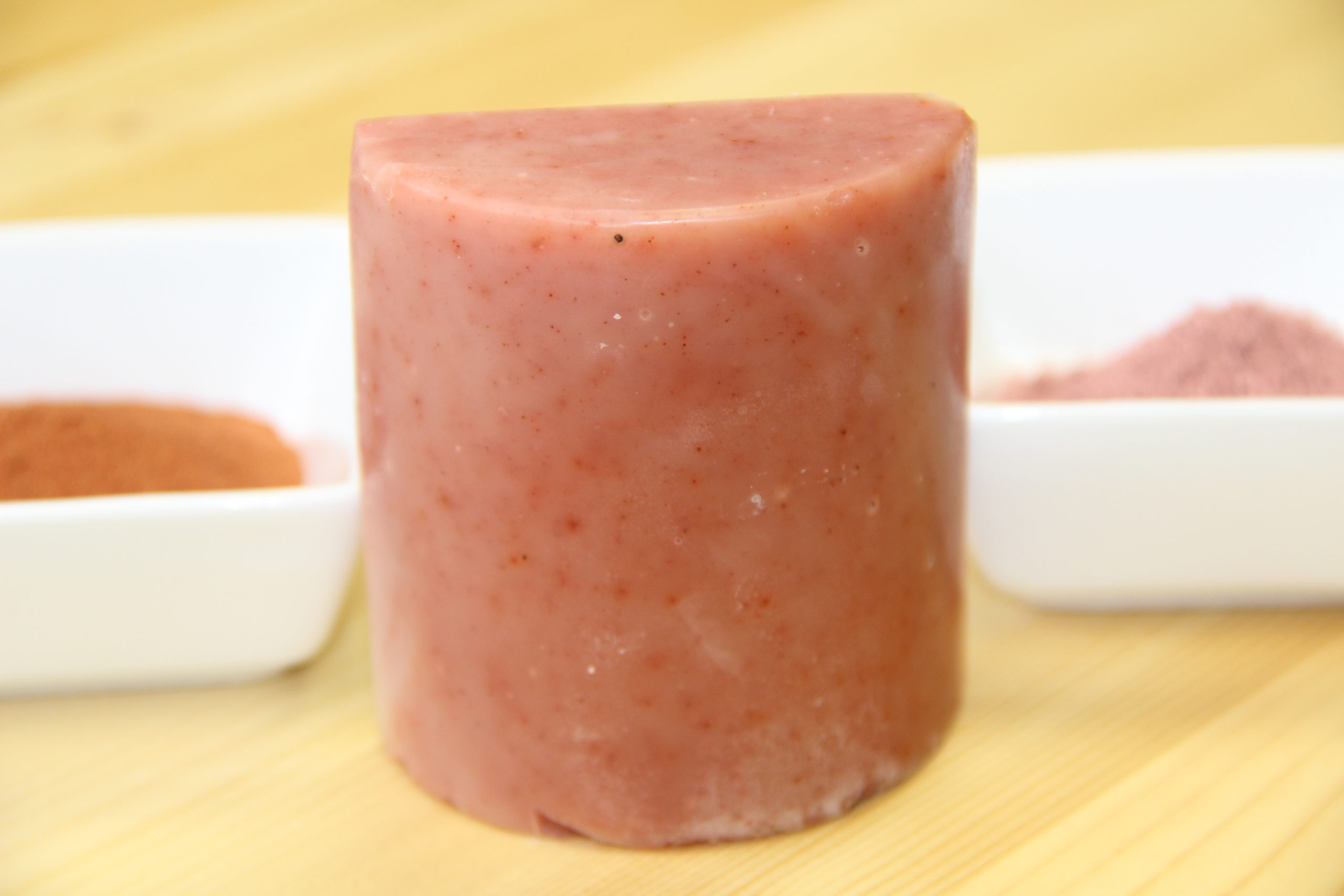
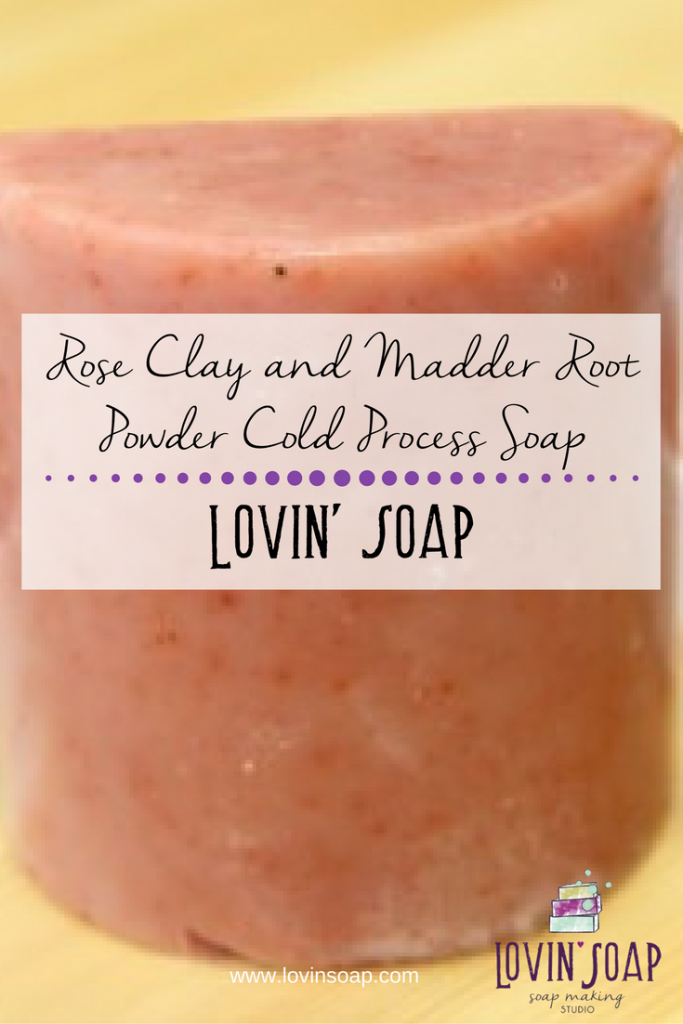
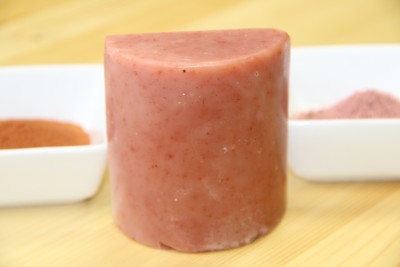

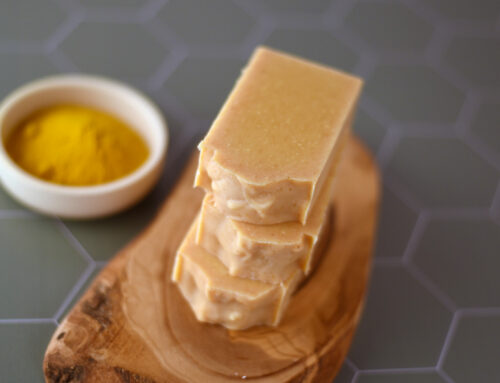
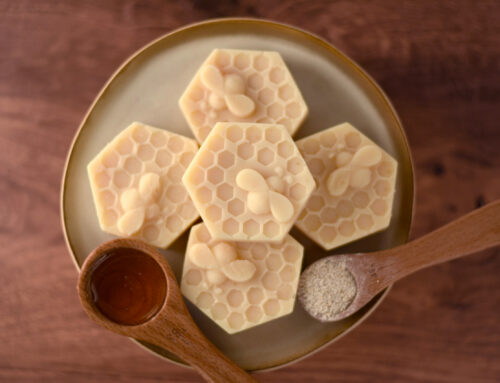
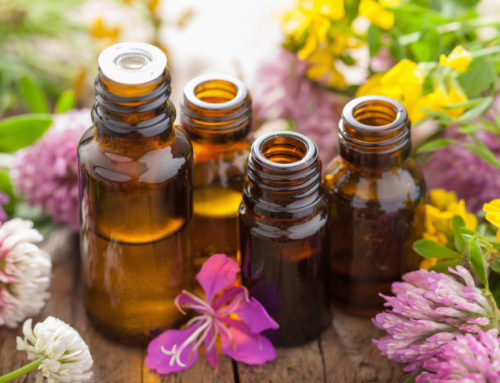

Can I use frozen goats milk instead of water
Have you found that the essential oil blend is too strong?
hi – i havent got access to rose clay – all i have is kaolin clay (white) – if i understand correctly rose lay is pink kaolin clay – can i use the white kaolin and add a touch of pink soap dye to my soap (your) soap recipe??? – thanks
Hello! I’m wondering if I can sub Madder Root Powder for Beet Root Powder or Arrowroot Powder, as that is what I have on hand. I’ve really been enjoying your blog. Please consider making more YouTube videos. Thank you. 🙂